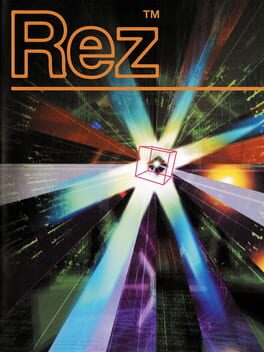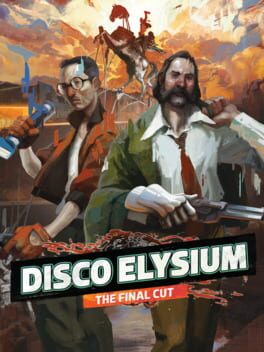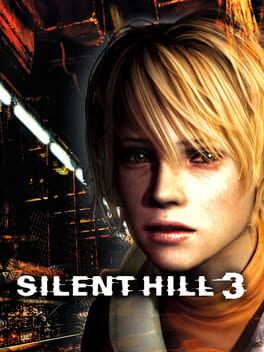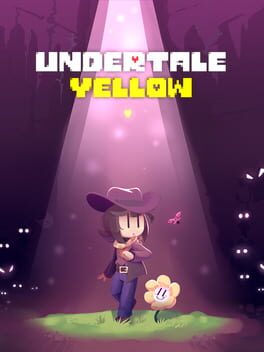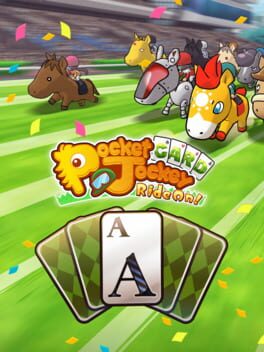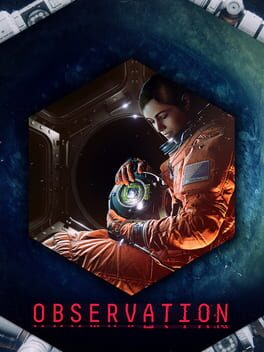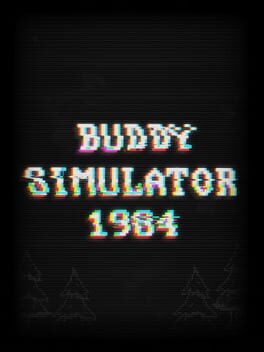psychbomb
BACKER
GAMETHOUGHTS WRITER!!!!!!
EVERY GAME DESERVES TO BE REVIEWED!!
Badges

GOTY '23
Participated in the 2023 Game of the Year Event

Listed
Created 10+ public lists

1 Years of Service
Being part of the Backloggd community for 1 year

Famous
Gained 100+ followers

Treasured
Gained 750+ total review likes

Pinged
Mentioned by another user

Early Access
Submitted feedback for a beta feature

Trend Setter
Gained 50+ followers

Adored
Gained 300+ total review likes

Donor
Liked 50+ reviews / lists

Loved
Gained 100+ total review likes

Popular
Gained 15+ followers

Gone Gold
Received 5+ likes on a review while featured on the front page

Full-Time
Journaled games once a day for a month straight

Gamer
Played 250+ games

Well Written
Gained 10+ likes on a single review

GOTY '22
Participated in the 2022 Game of the Year Event

Liked
Gained 10+ total review likes

Shreked
Found the secret ogre page

Roadtrip
Voted for at least 3 features on the roadmap

On Schedule
Journaled games once a day for a week straight

Best Friends
Become mutual friends with at least 3 others

Noticed
Gained 3+ followers

N00b
Played 100+ games
Favorite Games
398
Total Games Played
023
Played in 2024
105
Games Backloggd
Recently Played See More
Recently Reviewed See More
It’s not enough of the sauce, and it takes a little while before they actually start doling the sauce out, but by God, they’ve got the sauce! Undertale Yellow actually gets it, and what a triumph that is. It manages to avoid a lot of the pitfalls which plague fangames and have resulted in them getting such a broadly negative perception as being lesser forms of media, and it does so with an impressive amount of finesse. There are more than a couple of misfires here, and it can’t manage to be something that meets nor succeeds the original Undertale, but they’ve got the sauce. It’s a very big swing to take, and just about as big a hit.
What I appreciate most about Undertale Yellow is the sheer amount of restraint that the developers showcase. You only see Toriel for a grand total of about two minutes before she’s out of the game for good, and Mettaton, Alphys, and Asgore are mentioned a few times; apart from that, the only returning character who actually sticks around for most of the runtime is Flowey, and he acts differently enough that a large part of the narrative is trying to figure out what angle he’s playing at. There’s no Sans. He doesn’t even get namedropped! What? Can you imagine releasing an Undertale fangame and not bringing up Sans? When I got to the Snowdin Town bridge and released that Sans wasn’t going to show his face, I got pumped. It’s brave. A group far less confident in themselves would have just made this a second lap through the extant Underground, going on a little adventure to essentially experience Undertale all over again in a world where you could just play Undertale again if that was what you wanted to do.
The first impressions when the game starts branching off of Undertale aren’t especially strong. The first original NPC that you meet in the Ruins — Darv or Darm or Darl, whatever his name is — very much looks like someone’s Adventure Time self-insert that they drew to be Marceline the Vampire Queen’s boyfriend. Picture me retching as I type this. His character isn’t particularly good, mostly just muttering about some betrayal from long past and talking about how he wants to be left alone, and the game seems to agree with me in this respect; he drops off the face of the earth for the remainder of the runtime, only showing up again at the very end to make sure that the player hasn’t forgotten about him. The other new characters are significantly better: Martlet is a strong and obvious standout among the rest of the cast, North Star and his posse aren’t as consistent in their designs nor personalities but are still good, and Ceroba seems a lot like someone’s fursona but not in an especially bad way. I ended up liking more of the principle cast than I didn’t, so they’re definitely doing something right on the design and writing front.
The average enemy encounter is fine; there’s nothing especially interesting about most of them, though some do offer a couple of interesting gimmicks. Making the “floor slippery” so that the soul glides around or the music enemies blasting you with waveforms that you need to dodge are cute. Most of the boss fights don’t offer anything especially interesting, though. While Pacifist Ceroba does manage to get a few interesting gimmicks going in the form of giving the player the Big Shot, the overwhelming majority of the boss fights are just clicking Spare over and over and over again; your ACT commands often do nothing besides give the same line of flavor text every time you select them, which is a fairly boring way to handle these big encounters. I found the Guardener to be the best fight simply because it required you to hack away at vines blocking your options which then led into an ACT chain, giving you some freedom in the form of selecting which of your options you want to be available to you first. El Bailador is fine, turning the game into a rhythm section for a few minutes, but it doesn’t do much for me. So many of these fights are just about dodging bullets and slamming Mercy over and over again, and that’s never really been the draw of Undertale.
Similarly ranging from alright to forgettable are the music tracks. There’s nothing truly offensive here, and there are a couple that I like, but it's important for us to remember that Toby Fox was a composer long before he was a game designer. I can still hum the melodies to just about every track from Undertale, but I don’t think I could do the same for a single song from Undertale Yellow — at least, not from the ones that don’t lift one of Toby’s leitmotifs. While I do admire the developers’ willingness to get out from under the Undertale narrative trappings of returning characters walking in like sitcom guest stars for the audience to whoop and applaud to, I can’t extend the same praise to their composing. Ceroba’s fight plays a remix of Hopes and Dreams that the game absolutely hasn’t earned, and it took me right out of a battle that I was digging up until then. There are quite a few instances of obvious musical recycling in places where they don’t belong, and the songs that are wholly original don’t interest me much. They're far from anything terrible, but they feel a bit lazy in a game where there isn’t much else that does.
Undertale Yellow is ultimately a good fangame, and that is perhaps deserving of more celebration than anything else. It is very clearly made by a team of passionate and creative people, and I don’t think that their time spent on this would have been better spent on an original IP, instead. With that said, I would prefer for the next thing that this team releases to be something entirely of their own design; with all of the eyes that they’ve got on them now, I’m sure they’ve cultivated an audience that would be glad to see more.
And the sprites look too good. It’s all wrong. Part of the appeal of Undertale is that it looks like hot shit.
Open Roads had a very rocky development, and it's not hard to tell. Announced about four years ago at The Game Awards and three years after the studio's then-latest release of Tacoma, Open Roads ran into some trouble when it came out that Steve Gaynor was a microtyrant who was forcing employees out of his company. In a true success story for the industry, he'd only been abusing his power over his subordinates to humiliate and demean them (specifically focusing his ire on the women at his company), and not to sexually harass them — please, hold your applause for the man until the end. The news broke that this dipshit and his stupid haircut had been responsible for turning over nearly the entire workforce of Fullbright over the course of just two years, and Gaynor stepped down ahead of the story coming out. He said he was very very sorry for his behavior and that he wouldn't do it again, but also that he wasn’t sorry enough to surrender the company name. Open Roads is now credited to "The Open Roads Team", comprised of the couple of employees who were left in the wake of his reign and whoever else they could bring on to save the project from a shallow grave. The game released just a few days ago to a remarkably small audience and a middling reception, and it isn't difficult to see why.
Open Roads fucking sucks.
It's a game that's very obsessed with detail, yet is remarkably uninterested in its story. When the game let me open up a trash can and pick out every single piece of garbage individually to examine it in a 3D model viewer, I got the feeling that I wasn't going to enjoy this. The models themselves are all very intricate and detailed, each one of them complete with their own bespoke labels, and fine print, and they're all very lovingly put together, and I absolutely would not have noticed nor cared about any of this if a core component of the game wasn't picking up random objects and looking at them. There's a reason that movies don't feature characters picking up every loose object on the set and holding them up to camera, and that's because it's not particularly interesting to do that. I feel like I have to explain this from first principles. What do we gain by doing this? What do we gain from having the player pick up loose items and stare at them? What does that accomplish that just dressing the set with static objects wouldn't? It certainly makes the game last longer, because you need to pick up every piece of random bullshit in the hopes of finding the ones that advance you to the next section, but there's no appeal in doing that. It's busywork. So little worldbuilding actually happens by digging through these items; you'll be picking through erasers and pencils and plates, all such boring, domestic objects that don't have any character to them whatsoever. You can pick up some push pins and look at them. They're normal fucking push pins. You can pick up a fork and look at it. It's a normal fucking fork. You can pick up a comb and look at it. It's a normal fucking comb. What are we doing? Why? Is there something about allowing me to pick these objects up and look at them that does anything that leaving them in the scenery for me to look at wouldn't? Could we at least do something interesting with them? Express some personality through them? Give us a reason to investigate them? Anything, so long as it could give this a point.
Tonally, this is all over the place. Tess being kind of mood swing-y makes sense — she's fifteen, and nobody seems keen on telling her fucking anything on the grounds of it being "too complicated", despite one of the core conflicts of the game being completely resolved in a literal three minute talk at the end — but Opal falls into this pattern as well. Tess will go way, way too far in making an accusation or just trying to come up with something that would hurt her mom, and Opal will respond in kind, and then the pair of them will act like nothing ever happened. One sequence has them blow up on one another, refuse to say another word until the end of the car ride, and then resume quipping and bantering not even thirty seconds later. It takes more time for you to eat the fucking burger that Opal buys you at the motel than it does for the only two principle characters in this story to have a ground-shattering fight and then completely resolve it. The store description boasts that Tess and Opal’s relationship has “never been easy” when it so obviously is. If I had said so much as a fraction of the shit Tess says to my own mom, I would have demolished our relationship. Instead, it’s all glossed over, all just Buffyspeak for the pile. If wry quips were currency, Tess and Opal wouldn't have to sell the house.
The game can't ever decide whether it's time to floor it or slam the brakes, and instead has you constantly whipping back and forth between long segments of doing fucking nothing besides wandering around to rotate ashtrays and then blasting forward with story development that you barely even have time to register as happening before it's over. Your grandfather died, but he wasn't actually your grandfather, but he was a jewel thief, but he was your grandfather, but he might still be alive, but he tried to turn himself in, but who cares, but maybe your professional gambler father can enlighten you, but roll credits. Christ. We spend 90% of the runtime walking around and investigating literal fucking garbage and then cram way too much of this incredibly boring story into not enough time to tell it. This isn't even an Open Roads problem, but Open Roads is a symptom; so many games have fucking atrocious pacing. I've started celebrating anything that can get to credits without rushing or dragging. At least this has the decency to be over in an hour and a half, despite the fact that it does nothing with that time.
Would you believe me if I told you that this controlled badly? For a game this simple, just about every control scheme has something completely broken about it. If you're playing on a gamepad (the optimal way to play), menus are often incredibly sticky and require a few button presses before they actually register that you want to move your cursor up or down. Getting from New Game to Continue on the main menu took four down presses to move the selection box down once. Objects that you can interact with are what I can only describe as "sticky"; moving your reticle near them will drastically decrease your sensitivity and pull your view towards the item like a magnet, ensuring that you can easily pick up the item without having to fiddle with getting the reticle placement just right. This, in theory, is a great idea. In practice, the fact that so many fucking items in the game can be interacted with means that your view is constantly being dragged around, making it feel like you're fighting with the controls when you're trying to look up from a desk to the exit door. You can't move your camera freely unless you're staring off into empty space, because your reticle keeps getting caught on objects and making it incredibly difficult for you to look away from them. It should not be this frustrating simply trying to look around a room.
Doing this on a mouse is where the fun really begins, though. I don't know what happened with my copy of the game, because I can't imagine that this happened to anyone else and they didn't see fit to mention it; it's obviously a bug, but it's also really funny that it made to the final release. Mouselook, for some ungodly reason, is locked to eight directions. It also "snaps" when you move it around, jumping from one point to another rather than smoothly gliding between them. I thought it had something to do with the controller being plugged in, but it persisted through both unplugging the gamepad and restarting the PC. I can't really explain how bad this is through text, so I've graciously provided you with a video so that you won't have to experience it for yourself. Nobody should know these horrors, but I do. You should not be made to carry this burden.
I feel bad giving it this low of a score, because I usually prefer to reserve the half-stars for works that are actively harmful. The kind of thing that does damage. But there is absolutely nothing that I like here. I detest the writing, I detest playing it, I detest the way that it looks, I can't fucking stand it. This game radiates a horrid energy that enters me in waves and saps my will. The writers have almost never worked on anything else in their lives and one of the lead art directors made Dream Daddy. We're not dealing with heavy hitters of the industry, here. These are people who are uniquely underqualified coming in to try and salvage an extant work tainted by employee abuse because throwing out the name and starting over would be bad for brand recognition.
Despite the fact that this is intended as something of a follow-up to Gone Home, there's almost nobody left from that project who's still working on this one. This isn't a successor project so much as it is an imitation, all of the gaps smoothed over with drywall mud from Annapurna helping to pull in nearly three hundred fucking contractors to get this out. What compelled them to go ahead with releasing this? Open Roads is the ship of Theseus. Clearly everybody who knew what they were doing when they were still under the Fullbright banner is gone with no intention of coming back, and the ones with a clue who survived Gaynor's reign don't have enough of a voice under the fucking mountain of outside artists and developers being brought in to push this out the door.
Open Roads is a game that clearly has talented people on board, but is helmed by a team lead (or leads, plural) who have no clue what do to with them. There’s so much wasted potential here. It sucks to see all of these people wriggle out from under the thumb of an abusive manager just to immediately be put beneath the thumb of a new manager who’s incompetent, instead. I can’t write here what I hope happens to Steve Gaynor. I do hope that whoever’s left from Fullbright can leave Annapurna behind and make something better than their oldest work, because I know they’re capable of it. They just need a leader who isn’t a fucking moron.
Hey, mom!
If you've ever played one of those "make-your-own-game" games like Game Dev Story or Game Dev Tycoon or Mad Games Tycoon or any of the millions of fucking Kairosoft knock-offs out there, you're familiar with how the real-world game design process tends to be abstracted into gameplay. In order to keep things from getting too complicated, these tycoon games usually have a design pipeline which asks the player to combine a "genre" tag with a "theme" tag. The more "appropriate" the combination of tags, the better your fictional game tends to sell. Mixing "action" with "shooter" is almost universally a safe pick, as is something like "simulation" with "motorsports". Where you'll fall into the weeds, however, is when you decide to get experimental; making an "action farming" game or an "extreme sports RPG" tends to guarantee little more than poor sales and middling reviews. I played Game Dev Story a lot growing up, and it always annoyed me that what I thought were the most interesting and unique combinations always resulted in something that capped out around mediocre. I had game dev aspirations of my own — among other ideas, like being an astronaut or a lawyer — and I vowed that on the day that I could start running a studio of my own, I would never turn down even the wildest of ideas. I would play them, and support them, and make sure that everybody knew how good they truly were.
And I don't especially enjoy this horse-racing solitaire game.
My biggest gripe just comes down to the fact that what we have here is a fairly uninteresting horse racing game standing alongside a fairly uninteresting solitaire game, and the two exist in distinct and separate layers like how oil sits on water. Racing the horse seems to be the primary gameplay element — you can fail to full-clear the solitaire minigame and it doesn't count as a loss, with wins and losses instead coming down to the result of the actual race — but the horse's performance being abstracted into the solitaire minigame really doesn't feel as though it accomplishes much. There's no harmony between these systems. You do solitaire to make the horse run faster and more efficiently, but you could slot any sort of minigame in here and nothing would change. If this was Pocket Sudoku Racer or Pocket Slide Puzzle Racer, the core of racing the horses would remain wholly untouched. How close you got to finishing the minigame before the timer runs out or your deck empties gives you a boost or a penalty, but there are a dozen different games you could substitute in here without noticing a difference. The solitaire game and the horse racing game are hardly reliant on the other, nor does one make the other shine; they just exist together, each acting as an interruption of whatever the last mode of gameplay was.
Of course, Pocket Card Racer isn’t bad, but I don’t believe it to be especially good. The solitaire minigame is decent enough for an hour or two, and the raising of the horses implies that there’s going to be a lot more depth to the racing than there actually is, and it’s all okay. It’s a vehicle to play solitaire as filtered through the lens of being a jockey who’s whipping a horse named Nintendo Biggs on the final stretch of the track. There are far better and far worse ways to play golf solitaire. Grab a deck and imagine a horse running in your mind while you do it. Put on one of the tracks from the game to really immerse yourself, because they’re bangers. You’d get a comparable experience and save yourself some cash.
This is the kind of game that’s going to hit at an exact intersection of what an incredibly small group of people have been begging for all of their lives.

